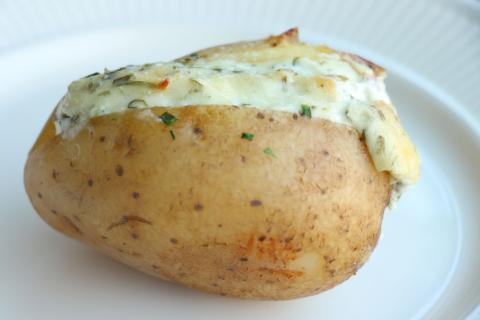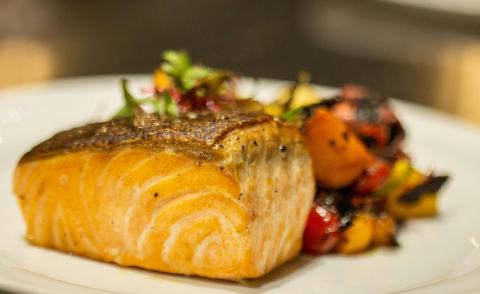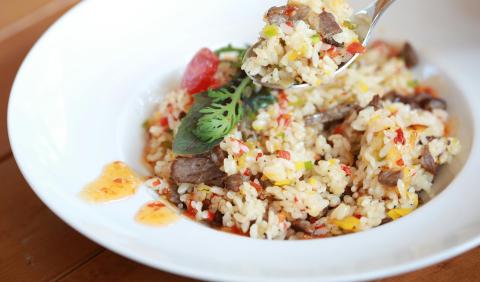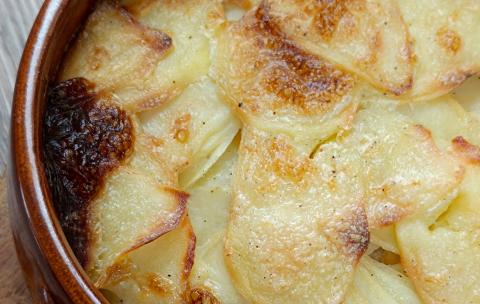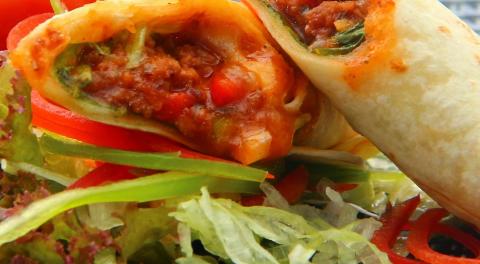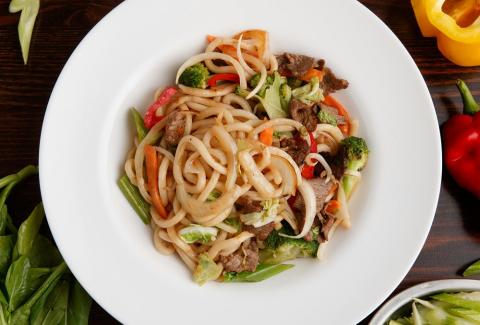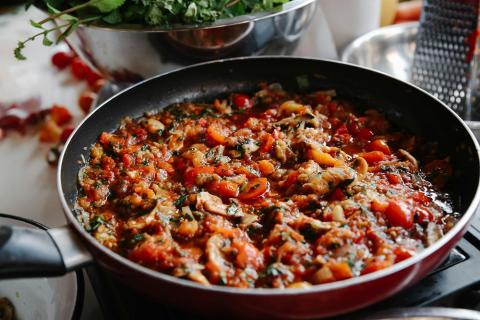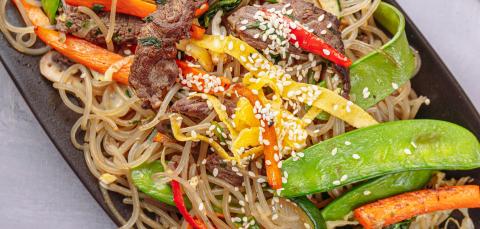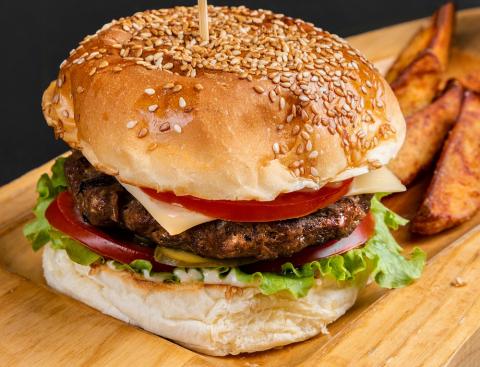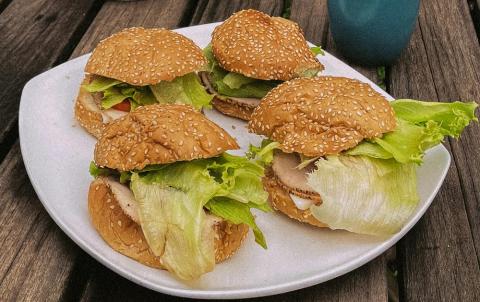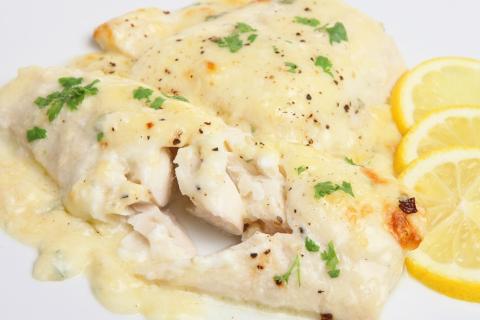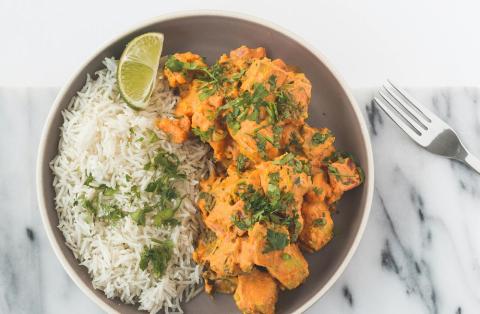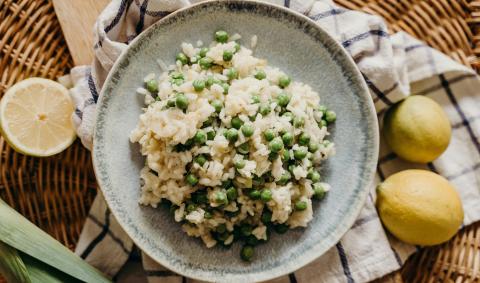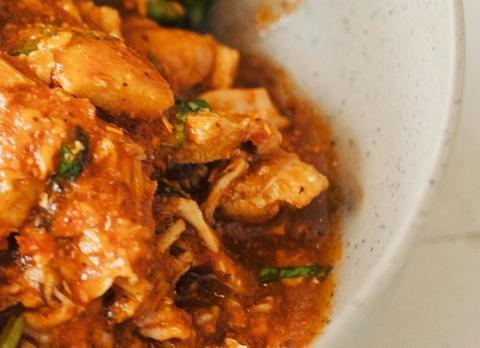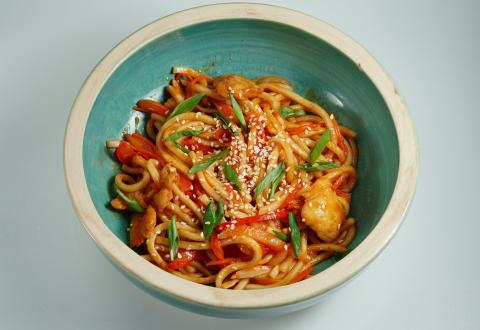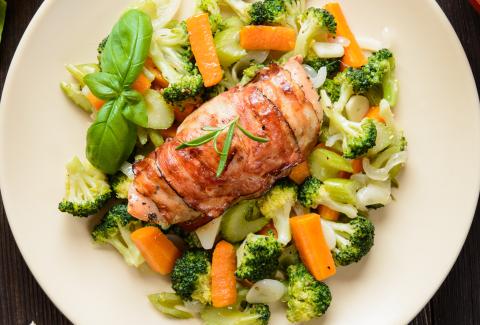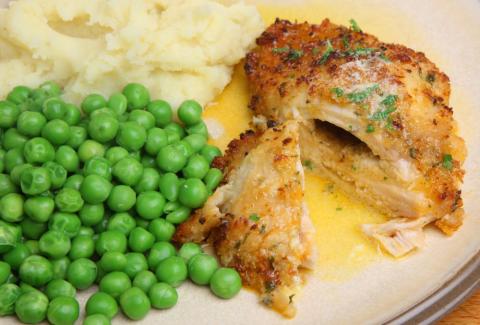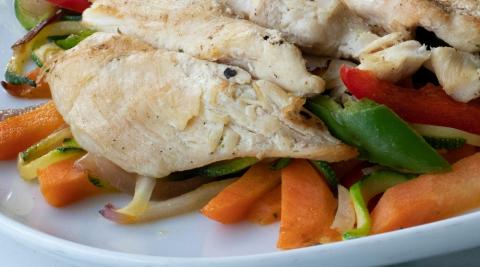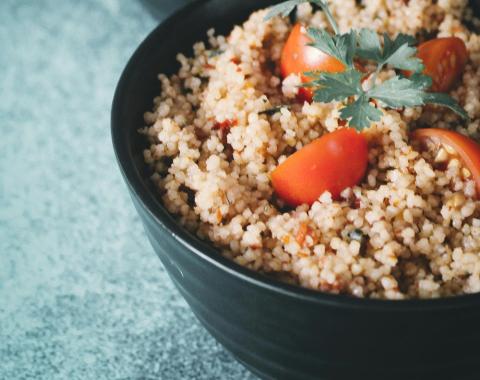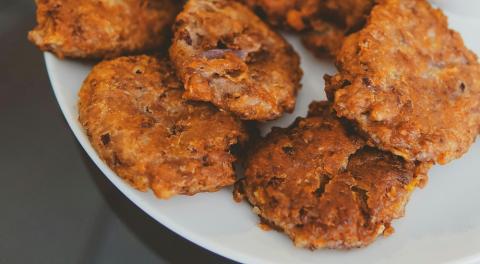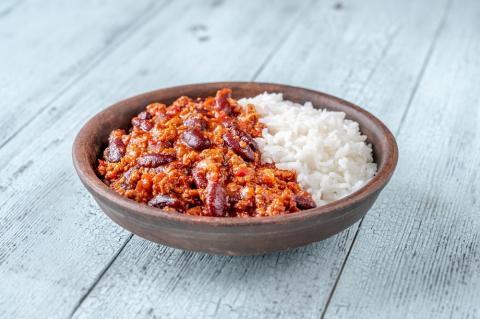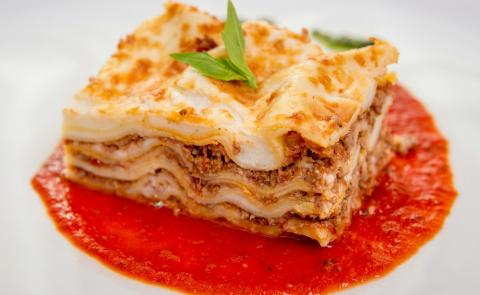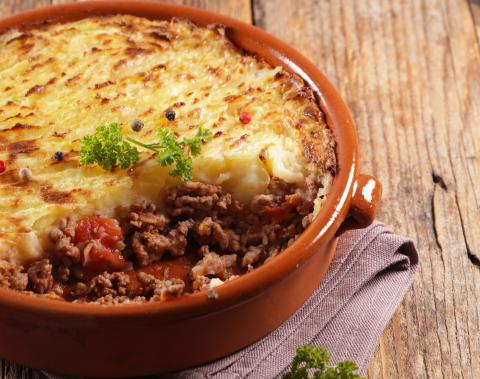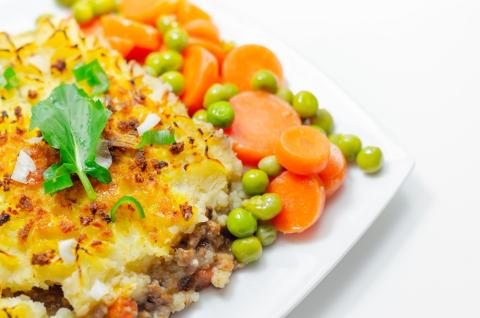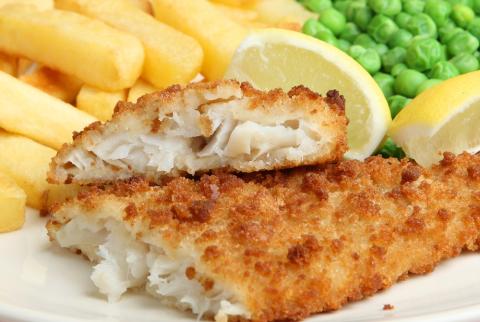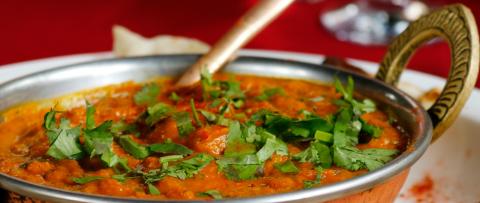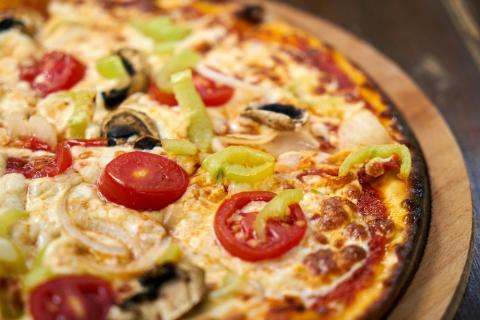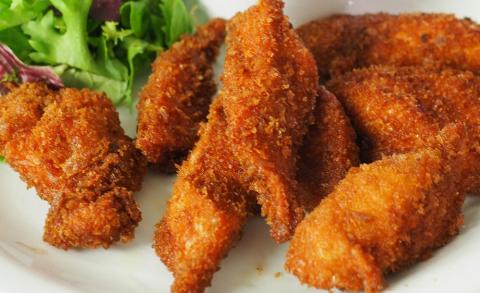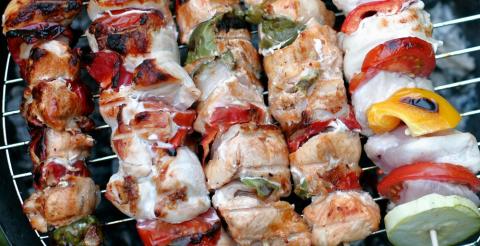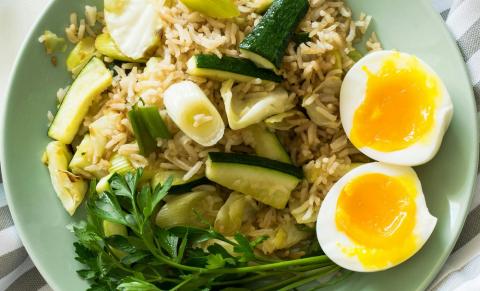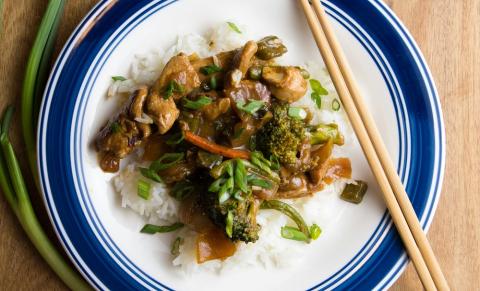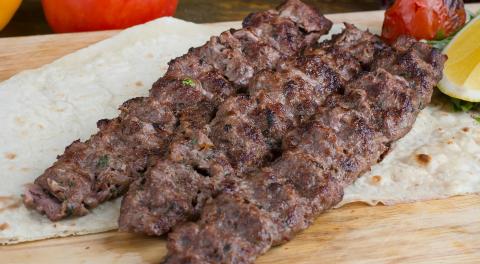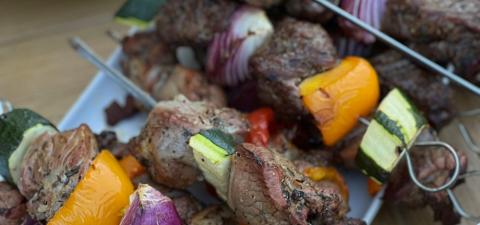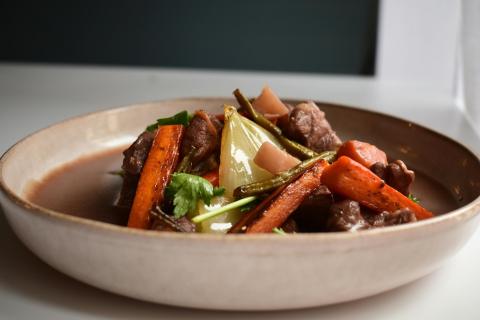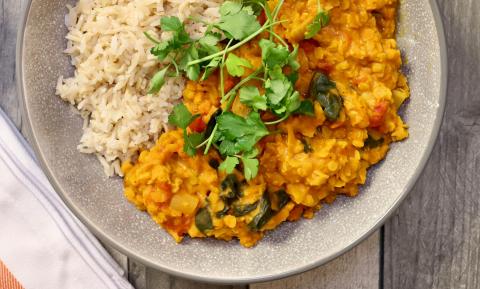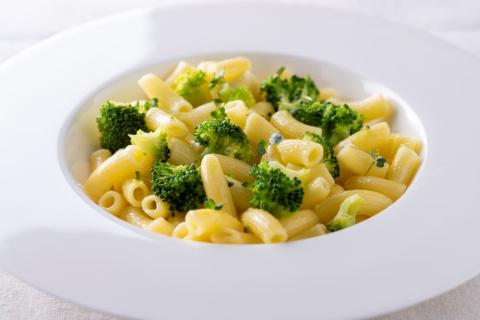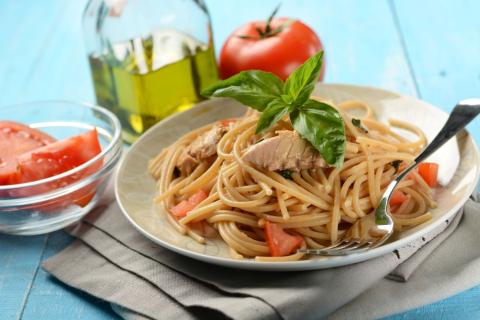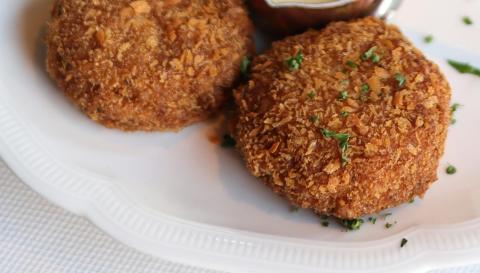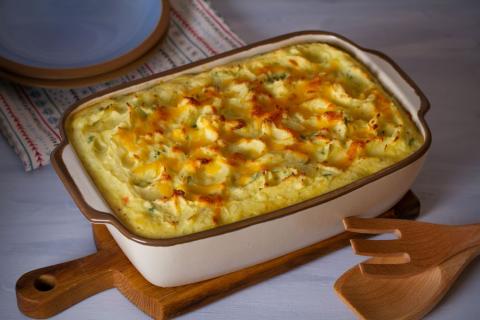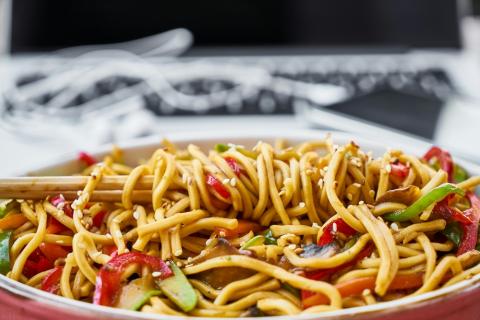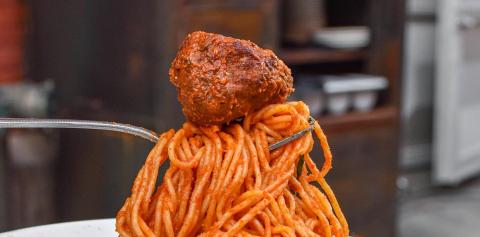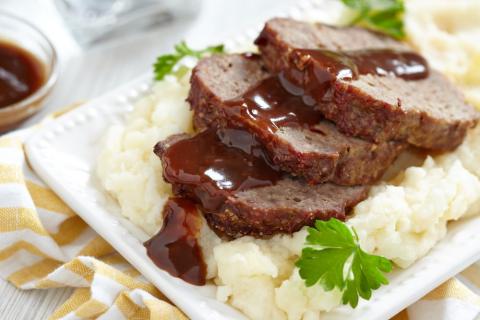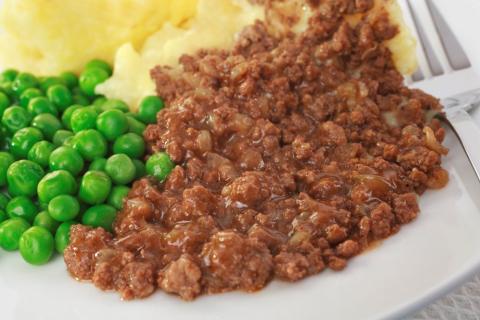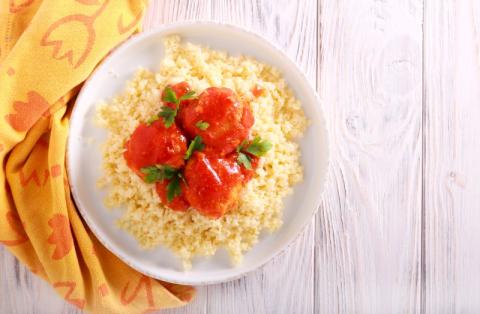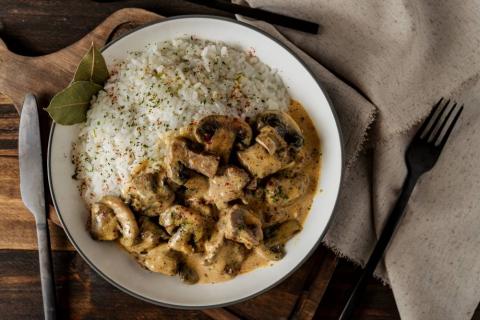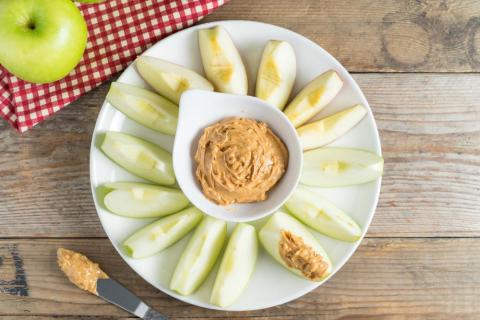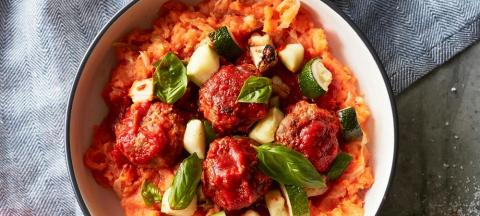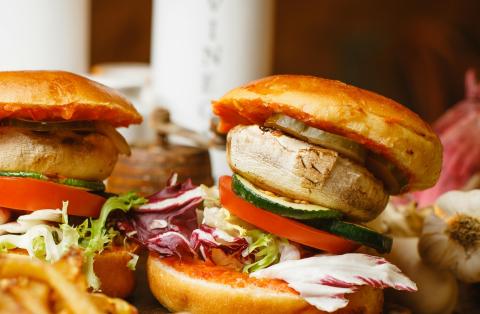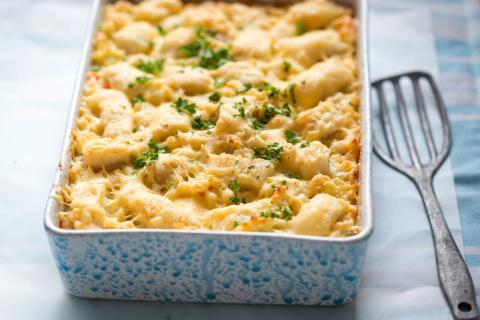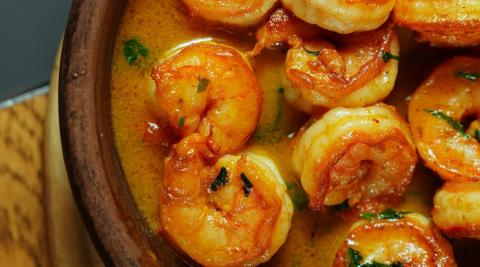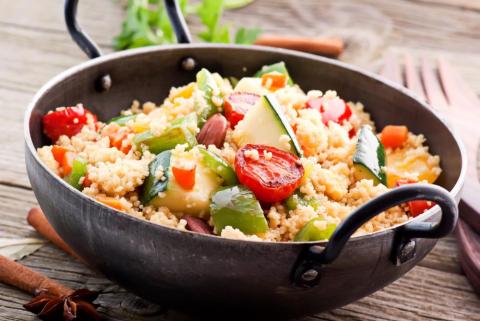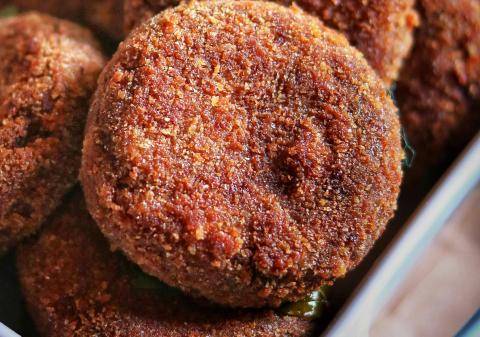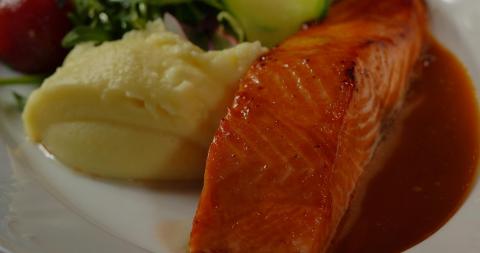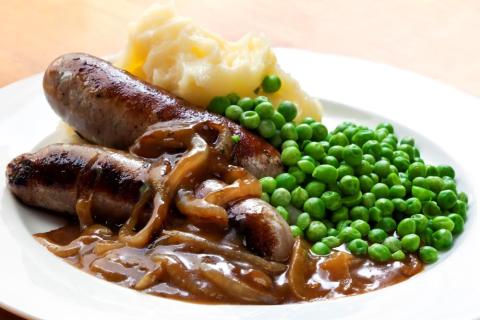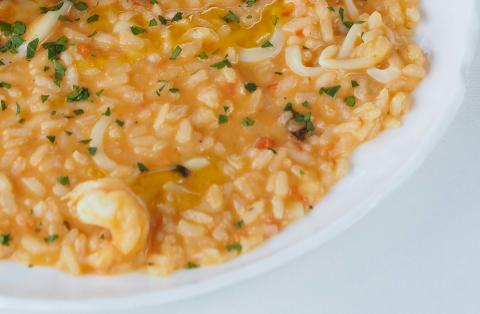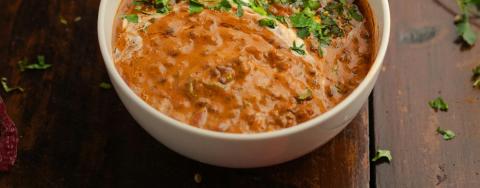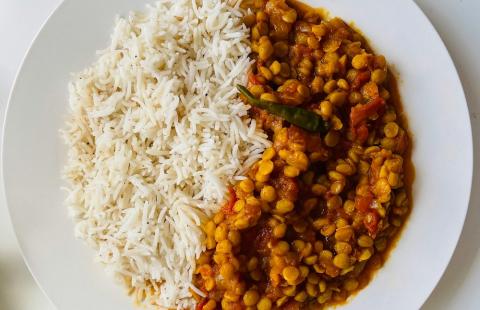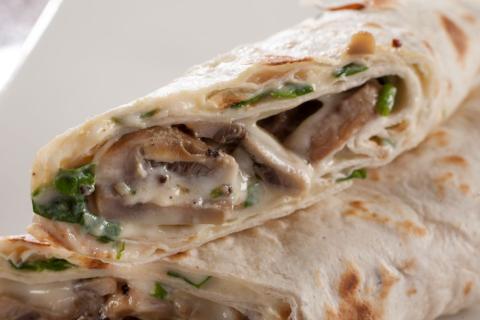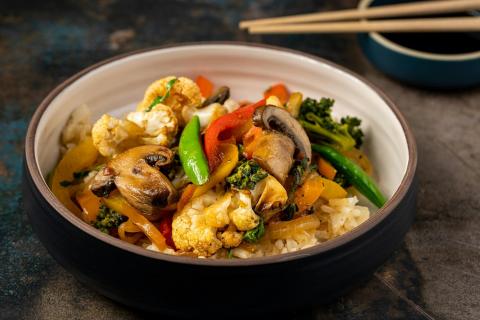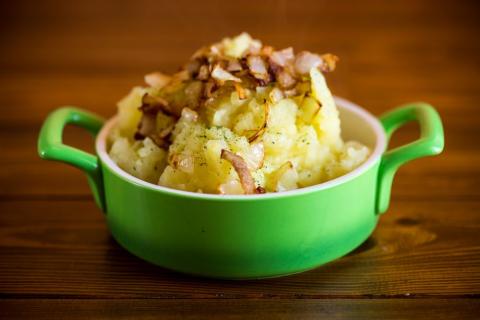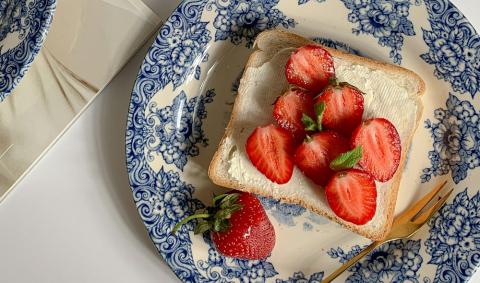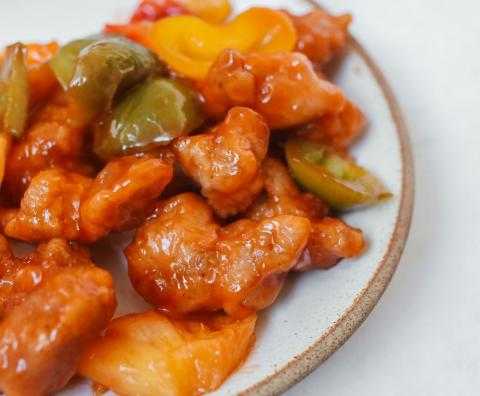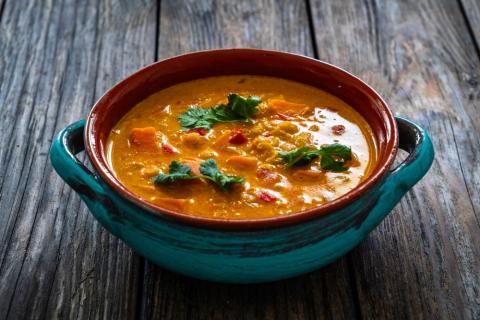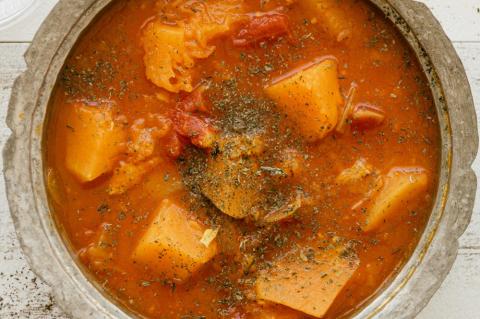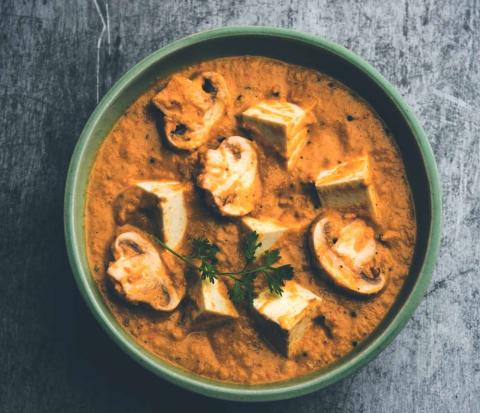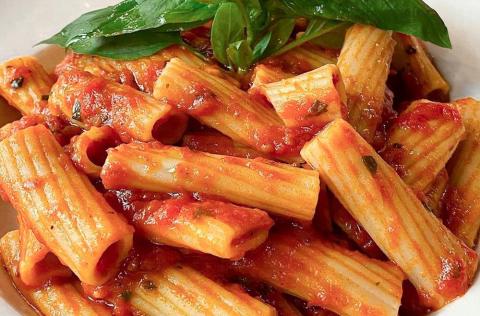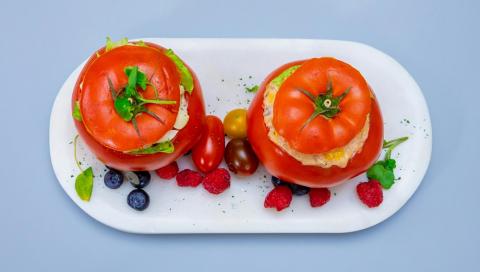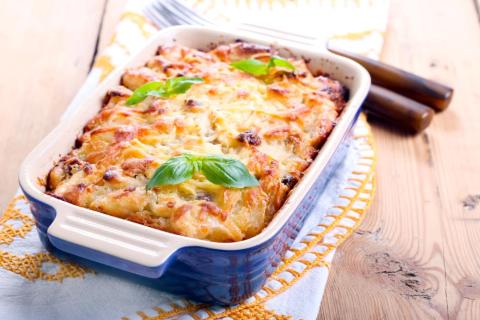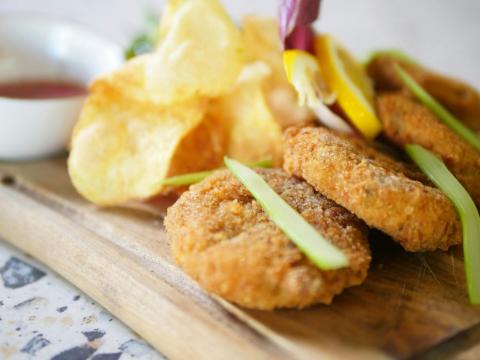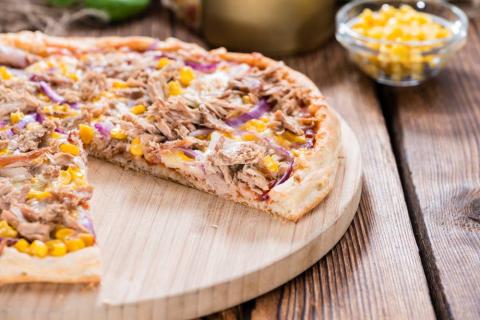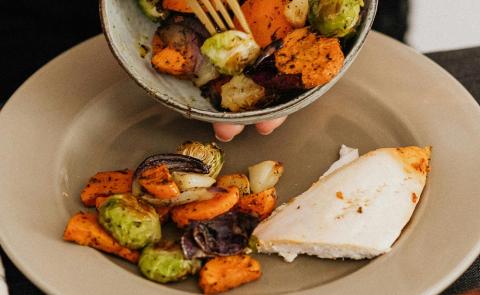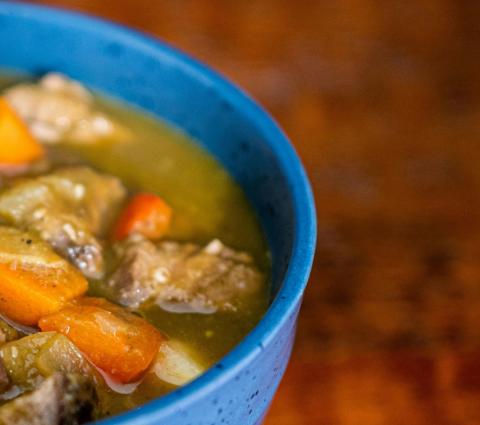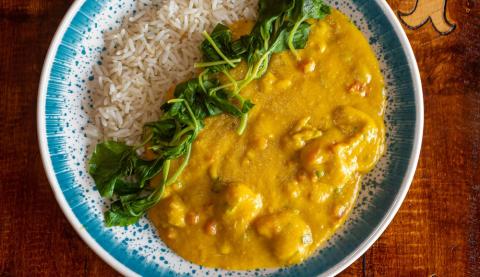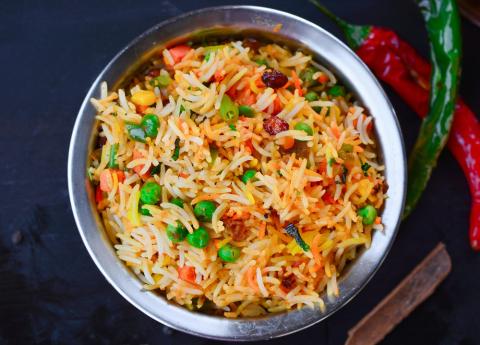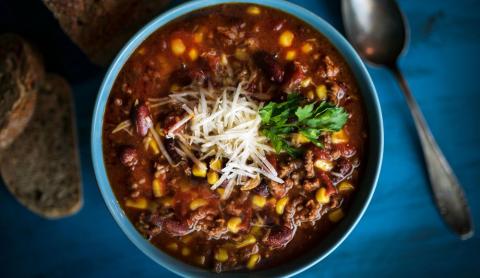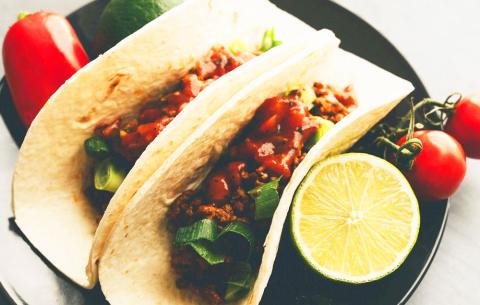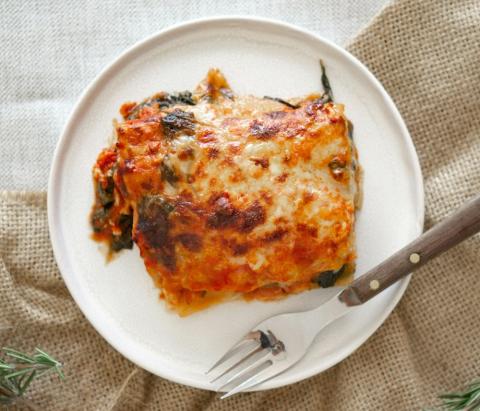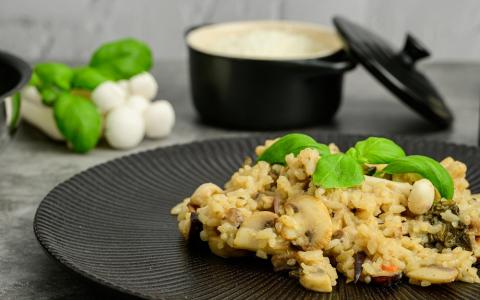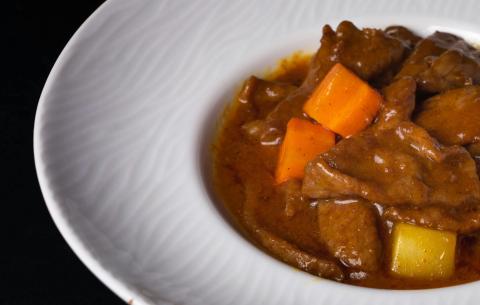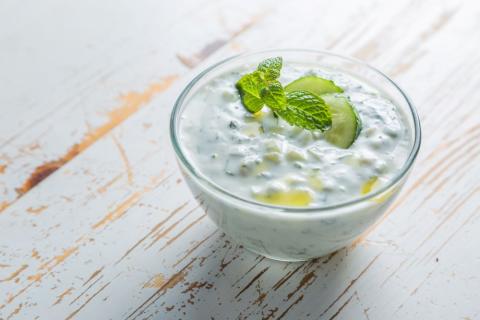- 1 Lean Pack (400g) Minced Beef
- 1 Medium Sized (160g) Leek
- 1 Medium Sized (90g) Parsnip
- 2 Medium Sized (160g) Carrots
- 4 Tablespoons (60g) Tomato Puree
- 1 Tablespoons (20g) Plain Flour
- 3 Cups (500ml) Water
- 1 Reduced Salt (7g) Stock Cube (Beef Or Vegetable)
- 1 Pinch (1g) Ground Black Pepper
- 5 Large sized (1kg) Potatoes
- ½ Cups (75ml) Semi-Skimmed Milk
- 2 Teaspoons (10g) Low Fat Spread
Ingredients
Allergy Disclaimer
Always check the label of each ingredient for allergy warnings.
Method
- Preheat the oven to 180oC / 160oC fan oven / 350oF / gas mark 4.
- Wash the leek, remove its outer layer and slice. Peel and dice parsnip, carrots and potatoes.
- In a large pan cook the mince until it starts to brown then add the leek and cook for a further 2 minutes.
- Add the parsnip and carrots to the mince and cook for 5 minutes. Next add the flour and cook for a further 2 minutes.
- Dissolve the stock cube in boiling water and add to the pan along with the tomato puree.
- Bring to the boil then simmer for 20 minutes until sauce begins to thicken and vegetables soften.
- In another pan boil the potatoes until they're soft then drain them, add the milk and low fat spread then mash with a fork or masher. Add pepper to taste.
- Add mince to oven proof dish and top with potato leaving no gaps.
- Cook in oven for 30-40 minutes, serve when potato has turned golden.
Time Saver Tips
You can prepare this pie in advance and pop it in the oven when you're ready to serve it up.
Tips for Kids
Let the kids get involved by asking them to wash the veg. Remember to chop it into bite-sized pieces for them.
Nutritional Information
Based on a single serving of 420g (% of an adult's reference intake)
Energy
469 kcals ( 23 %)
1,969 kJ ( 23 %)
Fat
5.6 g ( 28 %)
Saturates
55.5 g ( %)
Sugar
11.6 g ( 13 %)
Salt
0.9 g ( 15 %)
Detailed nutritional information
| Per 100g | Per 420g serving | |
|---|---|---|
| Energy Kcals | 109 | 469 |
| Energy Kj | 458 | 1,969 |
| Protein | 8 g | 34 g |
| Total Fat | g | g |
| Saturated Fat | 1.3 g | 5.6 g |
| Carbohydrates | 12.7 g | 55.5 g |
| Total Sugars | 2.1 g | 11.6 g |
| NSP Fibre | 1.4 g | 6.5 g |
| Sodium | 56 mg | 275 mg |
| Salt | 0.1 g | 0.9 g |
Find out about nutritional labelling
Nutrition labels on the front of packaging
- Most of the big supermarkets and many food manufacturers display nutritional information on the front of pre-packed food.
- Front of pack nutrition labels provide information on the number of grams of fat, saturated fat, sugars and salt and the amount of energy (in kJ and kcal) in a serving or portion of a recipe.
- The labels also include information about reference intakes (expressed as a percentage) which are guidelines about the approximate amount of particular nutrients and energy required for a healthy diet.
- The colour coding tells you at a glance if the food has high (red), medium (amber) or low (green) amounts of fat, saturated fat, sugars and salt.
- The more greens on the label, the healthier the choice
- Amber means neither high nor low, so you can eat foods with all or mostly ambers on the label most of the time.
- Reds on the label means the food is high in that nutrient and these are the foods we should cut down on. Try to eat these foods less often and in small amounts.
Food shopping tips
If you’re trying to decide which product to choose, check to see if there's a nutrition label on the front of the pack. This will help you to quickly assess how your choices stack up. You will often find a mixture of red, amber and green colour coding for the nutrients. So when you're choosing between similar products, try to go for more greens and ambers and fewer reds if you want to make a healthier choice.
 Activities & Play
Activities & Play Behaviour
Behaviour Childcare
Childcare Development & Growing Up
Development & Growing Up Family, Friends & Relationships
Family, Friends & Relationships Feeding Your Baby
Feeding Your Baby Food & Eating
Food & Eating Health & Safety
Health & Safety Mental Health & Wellbeing
Mental Health & Wellbeing Money & Work
Money & Work Online Behaviour & Safety
Online Behaviour & Safety Pregnancy & First Days
Pregnancy & First Days School & Education
School & Education Sleep
Sleep


